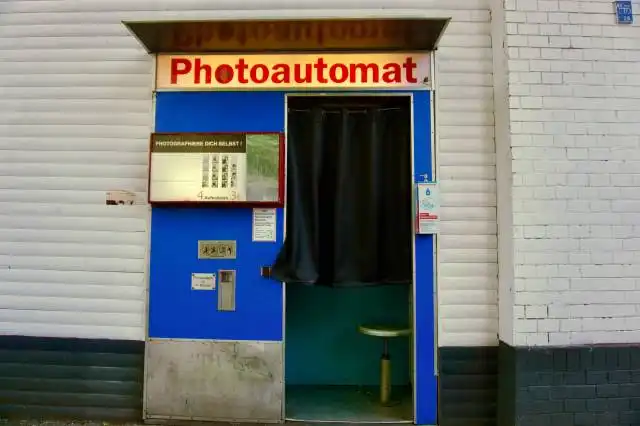Start a Vegan Food Truck
Turning Wheels and Greens: The Profitable Journey of a Vegan Food Truck Business
| Updated


VEGAN FOOD TRUCK
Revving up a Vegan Food Truck business has never been more appetizing! In an age where healthy, ethical and convenient dining is at the forefront of consumer desires, this mobile restaurant delivers plant-powered meals straight to customers' curbs. Operating primarily on wheels means where the demand goes, your business can follow! So get ready to cash in on the green, both in terms of cuisine and currency, with this innovative culinary venture.
Jump to Business Plan
RELATED BUSINESS IDEAS
Browse ALL Rental & Delivery Services Business Ideas
Discover Your Perfect Domain
Unlock the door to your online success with our hand-picked selection of premium domain names. Whether you're starting a new venture or rebranding an existing one, the right domain can set the tone for your digital presence. Browse through our curated list, each with its unique potential to enhance your brand's visibility and credibility.
VEGAN FOOD TRUCK MINI BUSINESS PLAN
This a quick reality check to help you identify the strengths and weaknesses of your business concept before you dive in.
Expected Percent Margin:
- Gross Margin: 60-80%
- Net Profit Margin: 10-20%
Earnings Expectations:
- Daily Earnings: $200 - $600
- Weekly Earnings: $1,000 - $3,000
- Monthly Earnings: $4,000 - $12,000
- Annual Earnings: $48,000 - $144,000
Actions to Hit Those Numbers:
Inventory Management:
- Initial Investment: At least $5,000-$15,000 for a started inventory of vegan food ingredients.
- Supplier Network: Build connections with 3-5 reliable suppliers focusing on quality vegan products.
Marketing and Customer Acquisition:
- Social Media: Post daily on platforms frequented by vegans (Instagram, Twitter, etc), sharing menu updates, location and operating hours.
- Local & Mobile Advertising: Use geotargeted ads, online promotions and event participation to attract a local audience.
Sales and Customer Experience:
- Staffing: Two members minimum; one to handle orders and payments and one to manage food preparation.
- Menu: Develop an appealing vegan menu with a range of pricing options to suit all visitors.
Cost Control:
- Vehicle Maintenance: Keep in mind associated costs such as fuel, general van maintenance and any necessary repairs.
- License and permits: Depending on your location, you might need specific permits. Research local laws to budget these costs.
Business Operations:
- Operating Hours: Weekend operation can maximize revenue. Consider opening during lunch and dinner hours on weekdays too.
- Menu Pricing: Aiming for an average ticket price of $8 - $15, can help reach projected daily earnings.
Remember, these are rough estimates and can vary depending on location, economic conditions, competition, etc. Always consult with a professional business advisor for personalized advice.
NOT WHAT YOU HAD IN MIND? Here are more ideas



Browse ALL Rental & Delivery Services Business Ideas
Grab Your Business Website Name
Before you get caught up in the whirlwind of setting up your business, invest in a domain name. It's a small but significant step that lays the foundation for your brand and makes it easier for customers to find and trust you. Just like you wouldn't build a house without securing the land first, don't build a business without securing your domain name.
"Why? Can't that wait?" Here's why it shouldn't
Step 1: Determine if the Business is Right for You
Breakdown of startup expenses
Before starting a vegan food truck business, it is important to understand the startup costs associated with the venture. This includes the cost of the truck, the cost of the necessary equipment, the cost of any necessary licenses or permits, and the cost of any necessary insurance. Additionally, you may need to consider the cost of any necessary repairs or upgrades to the truck, the cost of any necessary signage, the cost of any necessary marketing materials, and the cost of any necessary staff. It is important to research these costs and create a budget before taking the leap into a vegan food truck business.
Breakdown of ongoing expenses
Once the startup costs are taken care of, it is important to understand the ongoing expenses associated with running a vegan food truck business. This includes the cost of food, the cost of supplies, the cost of any necessary staff, the cost of any necessary repairs or upgrades to the truck, the cost of any necessary licenses or permits, the cost of any necessary insurance, the cost of any necessary marketing materials, and the cost of any necessary signage. It is important to research these costs and create a budget before taking the leap into a vegan food truck business.
Examples of ways to make money
There are many ways to make money with a vegan food truck business. This includes selling vegan meals, selling vegan snacks, catering events, hosting pop-up events, and partnering with local businesses. Additionally, you may be able to make money by selling merchandise such as t-shirts, hats, and mugs. It is important to research these options and determine which ones are right for your business.
Step 2: Name the Business
When it comes to naming a business, it is important to choose a name that is memorable, unique, and reflects the values of the business. It is also important to make sure the name is not already in use by another business. There are several ways to come up with a name for the vegan food truck. One way is to brainstorm ideas and come up with a list of potential names. Another way is to use a business name generator, which can help generate ideas for a business name. Additionally, it is important to consider the domain name associated with the business. If the desired domain name is not available, it may be necessary to come up with a different name. Once a name has been chosen, it is important to make sure the name is trademarked and that all necessary paperwork is filed with the appropriate government agencies.
Step 3: Obtain Licenses and Permits
Necessary licenses and permits
Depending on the location of the vegan food truck, there may be a variety of licenses and permits needed to operate. This could include a food truck permit, a business license, a health permit, and a food safety permit. It is important to research the local regulations and obtain the necessary licenses and permits before opening the food truck.
Local regulations
Local regulations can vary from state to state, so it is important to research the local regulations for the area the food truck will be operating in. This could include zoning regulations, parking regulations, and health regulations. It is important to be aware of the local regulations and ensure that the food truck is compliant with them. Additionally, it is important to be aware of any additional licenses or permits that may be required to operate the food truck in the local area.
Step 4: Find a Suitable Location
Factors to consider when choosing a location
When choosing a location for a vegan food truck, it is important to consider the local demographics, the traffic flow, and the competition. It is also important to consider the cost of the location, the availability of parking, and the availability of utilities. Additionally, the location should be in an area that is conducive to the type of vegan food that will be served. For example, if the food truck will be serving vegan tacos, it would be best to locate the truck in an area with a high concentration of Mexican restaurants.
How to secure a location
Once the ideal location has been identified, it is important to secure the location. This can be done by signing a lease, purchasing the property, or entering into an agreement with the property owner. Additionally, it is important to research the local zoning laws to ensure that the food truck is allowed in the area. It is also important to check with the local health department to ensure that the food truck meets all of the necessary safety and sanitation requirements. Finally, it is important to check with the local fire department to ensure that the food truck meets all of the necessary fire safety requirements.
Step 5: Design the Truck
Design considerations
When designing the truck, it is important to consider the size of the truck, the type of equipment needed, and the overall aesthetic. It is important to make sure that the truck is large enough to accommodate all of the necessary equipment and supplies, but not so large that it is difficult to maneuver. Additionally, the truck should be designed with the customer in mind, as it should be inviting and aesthetically pleasing.
How to create a logo
Creating a logo is an important part of branding the business. It should be simple, memorable, and recognizable. It should also be unique and convey the message of the business. When creating a logo, it is important to consider the colors, font, and design elements that will be used. Additionally, it is important to make sure that the logo is able to be used on all types of media, including print, digital, and social media. Once the logo is created, it should be registered with the U.S. Patent and Trademark Office to ensure that it is protected.
Step 6: Purchase Equipment
Necessary Equipment
In order to start a vegan food truck, there are certain pieces of equipment that are necessary. This includes a commercial kitchen, a generator, a food truck, a refrigerator, a deep fryer, a stove, and a microwave. Additionally, you will need to purchase utensils, plates, cups, and other items to serve food.
Where to Purchase Equipment
There are a few different places to purchase the necessary equipment for a vegan food truck. You can purchase the equipment from a restaurant supply store, online, or from a used equipment dealer. It is important to research the different options and compare prices to ensure you get the best deal. Additionally, you should consider the quality of the equipment and make sure it meets all safety regulations. Once you have purchased the necessary equipment, you can begin to set up your food truck.
Step 7: Create a Menu
Tips for creating a menu
When creating a menu for a vegan food truck, it is important to consider the local market and the type of cuisine that will be offered. It is also important to consider the cost of ingredients, the time it will take to prepare the food, and the cost of labor. Additionally, it is important to consider the types of dishes that will be offered, such as vegan burgers, tacos, salads, and desserts. It is also important to consider the types of ingredients that will be used, such as plant-based proteins, grains, fruits, and vegetables.
Examples of vegan dishes
Some examples of vegan dishes that could be offered on a vegan food truck menu include vegan burgers made with plant-based proteins, tacos with vegan fillings such as black beans, quinoa, and roasted vegetables, salads with vegan dressings, and vegan desserts such as vegan ice cream, cakes, and cookies. Additionally, vegan sides such as french fries, onion rings, and potato chips could be offered. It is important to consider the local market when creating a vegan food truck menu and to offer dishes that will appeal to the local customers.
Step 8: Market the Business
Step 8: Market the Business - After all the hard work of setting up the business, it is time to start marketing the vegan food truck. It is important to have a marketing plan in place to ensure the business is successful. There are many different tips and strategies that can be used to market the business.
Tips for marketing the business - It is important to have a good understanding of the target market and what they are looking for. Utilizing social media is a great way to reach potential customers. Creating a website and using search engine optimization (SEO) can help to increase visibility. Additionally, creating a loyalty program and offering discounts can help to attract customers.
Examples of marketing strategies - A great way to market the business is to create a presence at local events and festivals. This can help to increase visibility and attract potential customers. Additionally, creating partnerships with local businesses and organizations can help to increase the reach of the business. Offering catering services and delivery can also help to increase revenue. Finally, utilizing traditional marketing techniques such as print and radio ads can help to reach potential customers.
Step 9: Launch the Business
Tips for launching the business
Before launching the business, it is important to make sure that all the necessary steps have been taken to ensure success. This includes making sure that all permits and licenses have been obtained, that the food truck is properly stocked, and that the staff is properly trained. Additionally, it is important to have a marketing plan in place to ensure that the business is properly advertised and that customers are aware of the food truck’s existence. Additionally, it is important to have a plan for how to handle customer service issues, such as refunds and complaints. Finally, it is important to have a plan for how to handle any unexpected issues that may arise.
Examples of successful launches
One example of a successful launch is the launch of the vegan food truck, “The Green Machine”, in San Francisco. The owners of the food truck created a website and social media accounts to advertise their business and to keep customers informed of their menu and location. Additionally, they held a launch party to celebrate the opening of the food truck and to invite customers to try their food. Finally, they created a loyalty program to reward customers for their repeat business. Another example of a successful launch is the launch of the vegan food truck, “Plant Powered”, in Los Angeles. The owners of the food truck created an online ordering system to make ordering easier for customers. Additionally, they held a launch party to celebrate the opening of the food truck and to invite customers to try their food. Finally, they created a rewards program to reward customers for their repeat business.
EXPLORE MORE CATEGORIES
Browse ALL Business Idea Categories
TAKE THE NEXT STEPS










